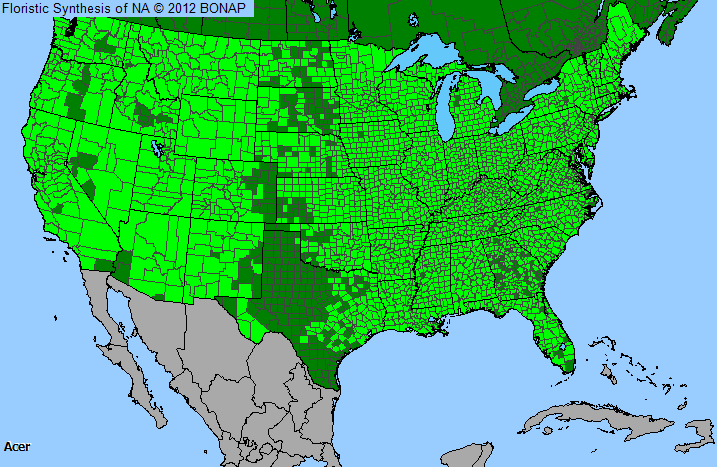
Plant Allergy Overview
Allergenicity
Severe
Pollen Season
Winter Spring
Type
Tree
Sub-Type
Deciduous
Allergy Information
All maple species are potentially allergenic. Box elder, which is primarily wind-pollinated, has significantly allergenic pollen. Silver maple has a secondary allergic importance except where very abundant. The other maples appear to cause fewer problems.
Genus Details
Maples are trees and shrubs with worldwide distribution, of which 13 species are native to US. Almost all maples are deciduous with distinct, palmate leaves (with parts diverging from a common base, as the fingers of a hand). The leaf is used as a logo for the Toronto Mapleleafs hockey team. Fruit are paired, winged seeds, known as samara. Many maples are popular for ornamental and street plantings. Acer negundo (box elder) differs from other maples in that its leaves are pinnately compound (separate leaves diverge from one central stem), and in that it has male and female flowers on separate trees that are entirely wind-pollinated. Trees reach 30-100 feet in height and 2-4 feet in diameter. In the U.S. flowering usually occurs in early spring through April or May, but can begin in January and February for sugar maples and other species, with a few species in W. U.S. flowering in June and July.
Pollen Description
Grains vary in shape from prolate to spheroidal; the amb rounded-triangular with convex sides, and 3-colpate or 3-colporate. The colpi are long with tapering, blunt or rounded ends. Pollen grains of Acer negundo (box-elder) have a distinct rugulate-undulating sexine.
The pollen grains vary in size, depending on the species and can vary in size from 30-51 micrometers x 20-36 micrometers to 22-26 x 20-36 micrometers in diameter.
Genus Distribution

The shaded areas on the map indicates where the genus has been observed in the United States.
 - Native, observed in a county
- Native, observed in a county  - Introduced, observed in a county
- Introduced, observed in a county  - Rarely observed
- Rarely observedSpecies in Maple, Box Elder Genus
Allergens & Plants Search
Enter a full or partial species name to find more information on one of over 1,200 potentially allergenic plants.
For example, you can find chenopods searching on "cheno"




